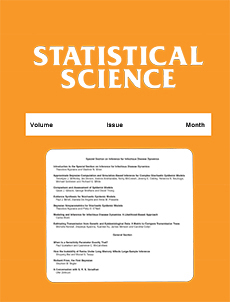Abstract
The $2\times2$ table is the simplest of data structures yet it is of immense practical importance. It is also just complex enough to provide a theoretical testing ground for general frequentist methods. Yet after 70 years of debate, its correct analysis is still not settled. Rather than recount the entire history, our review is motivated by contemporary developments in likelihood and testing theory as well as computational advances. We will look at both conditional and unconditional tests. Within the conditional framework, we explain the relationship of Fisher’s test with variants such as mid-$p$ and Liebermeister’s test, as well as modern developments in likelihood theory, such as $p^{*}$ and approximate conditioning. Within an unconditional framework, we consider four modern methods of correcting approximate tests to properly control size by accounting for the unknown value of the nuisance parameter: maximisation (M), partial maximisation (B), estimation (E) and estimation followed by maximisation ($\mbox{E}+\mbox{M}$). Under the conditional model, we recommend Fisher’s test. For the unconditional model, amongst standard approximate methods, Liebermeister’s tests come closest to controlling size. However, our best recommendation is the E procedure applied to the signed root likelihood statistic, as this performs very well in terms of size and power and is easily computed. We support our assertions with a numerical study.
Citation
Enrico Ripamonti. Chris Lloyd. Piero Quatto. "Contemporary Frequentist Views of the $2\times2$ Binomial Trial." Statist. Sci. 32 (4) 600 - 615, November 2017. https://doi.org/10.1214/17-STS627
Information





